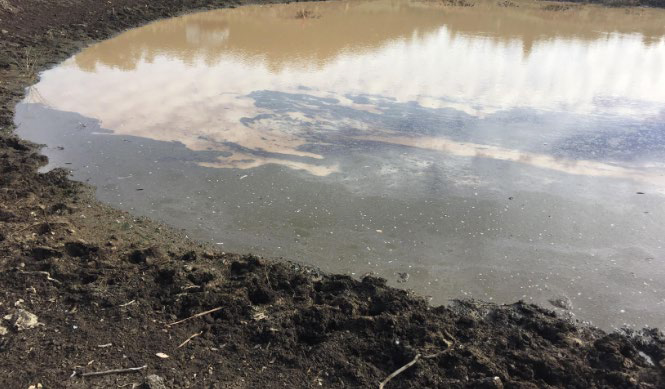Manage your water runoff from rain events to maximise water quality
Wendy Gill Senior Land Services Officer - Mixed Farming
Producers who have been lucky enough to receive some rainfall in the Central West region are being reminded to check their water sources and take action to improve water quality for the long-term benefit of their farm business.
After long dry spells, we see a range of changes in water attributes; specifically, colour and water quality caused by runoff after rain.
The run-off water often contains soil and organic material that is collected in dams and tanks as shown in photo 1 below.
If you have recently received runoff from rainfall events:
- Monitor your water storages.
- Ideally within the first 24-48 hours remove as much as possible any organic debris from the top of the water before it sinks (most often done by skimming the surface and physical removal)- this stops the putrification process from developing, which often impacts water taste, smell and odour. This can be in the form of leaves, grass, livestock faeces, limbs etc.
- Monitor the colour of the water- sources of cloudiness of water develop from dispersal of clay particles in the water, organic matter, other precipitator material or dissolved and other suspended material. Consider effectiveness of treatment types that suit your end use for your water i.e. for livestock requirements of different classes of stock. Is the water colour settling out?
- Start implementing remedial work to improve ground cover on your water catchment areas to avoid erosion of banks, contours and help to naturally filter - excess debris or soil particles from your runoff before it enters your dam or tank.
For example, building sediment screens strategically across the catchment area. Consider using fencing to strategically fence off catchment areas to allow them to recover more quickly from grazing pressure. These can work to slow runoff and catch sediments from entering your dams.
Another option is to encourage grasses and pasture establishment to slow water movement and help act as a natural filter; This is an important long-term management strategy, especially in areas that are prone to erosion or where groundcover is poor.
The above points illustrate that through proactive management early on, when rainfall is first received, you can easily improve water quality on farm, for you to use productively in your enterprise moving forward.

Photo 1: Example of organic matter material and sediment washed into a dam from rainfall runoff. (Source:C.Thompson).
Find out more
For more information and support in assessing water quality, water testing or advice on erosion control contact your Local Land Services Ag Advisory team member.
For further information on water quality; check out the NSW DPI factsheet Farm Water Quality and Treatment.
Contact
Wendy Gill, Senior Land Services Officer – Mixed Farming
Telephone:02 6850 1621
Mobile: 0438 358 819
Email: wendy.gill@lls.nsw.gov.au